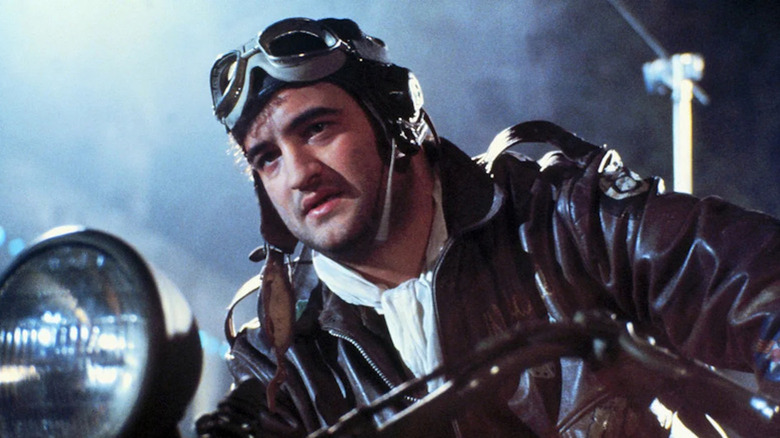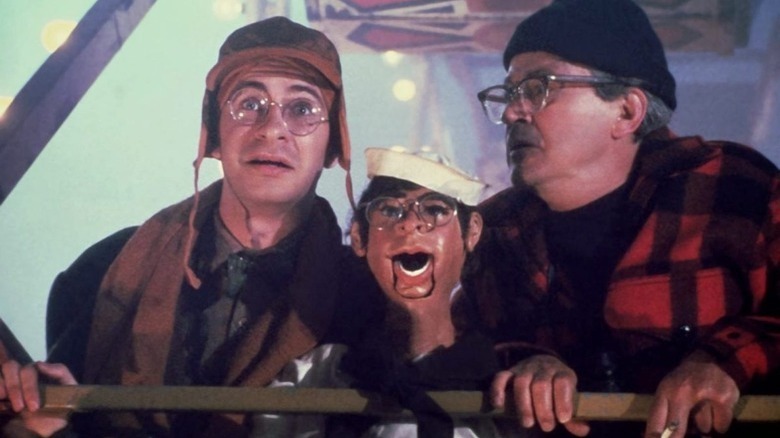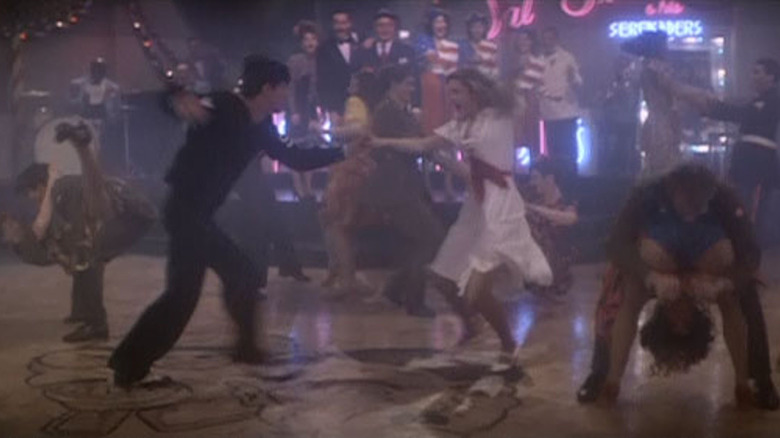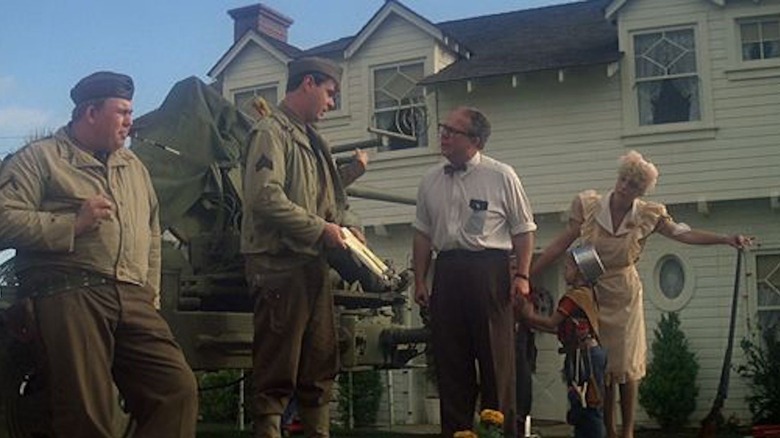Steven Spielberg was enjoying with home cash as he ready to make his fifth function. His earlier two movies, “Jaws” and “Shut Encounters of the Third Sort,” had mixed to gross the 2024 equal of $4.4 billion. He may’ve gotten a shot-for-shot remake of “Andrei Rublev” greenlit if he’d pressed the problem. He additionally may’ve hedged his bets and directed “Jaws 2.” No matter he made subsequent, he was going to make it wholly on his personal phrases.
Spielberg turned that home cash into f***-you cash, and shot an anarchic comedy that is like watching the richest child on the town craft an immaculate mannequin prepare set over the course of months, mainline Jolt Cola for a day, and lay full and whole waste to his creation in a shade underneath two hours.
“1941” is a madcap film about reckless and irresponsible People who’ve gone wild over an impending Japanese sneak assault on the shores of California. Their fears are effectively based, however their panic renders them a menace to their pals and neighbors — particularly when one in every of them will get an anti-aircraft battery plopped on his entrance garden (with hilariously exact directions on how not to fireside it). Finally, a flare up of “battle nerves” causes a conflagration over Hollywood Boulevard that rips like a wildfire out to Santa Monica, the place an change of artillery places a ferris wheel (and two watchmen) within the Pacific Ocean and leaves one home totally destroyed.
Spielberg’s fifth movie is commonly considered his first flop, but it surely grossed $95 million worldwide on a finances of $35 million (its $31 million home take may’ve been bigger had Common not opened it the identical day as “The Jerk” on the top of Steve Martin’s recognition). It was, nonetheless, a miss with the nation’s critics, who had been a bit of too wanting to see filmdom’s wunderkind eat it.
The critics had been unamused by 1941
In his one-and-a-half-star pan of “1941,” Roger Ebert wrote, “All people races round like folks caught in a Jack Davis drawing for ‘Mad’ journal.” That is not a foul factor, Rog; it is the movie’s guiding advantage. Blockbuster-scale anarchy is not, in and of itself, essentially humorous (see John McTiernan’s clamorous chore that’s “Final Motion Hero”), however when unleashed within the service of an American wartime satire it feels solely applicable. Different critics like The New York Instances’ Vincent Canby and The Washington Put up’s Gary Arnold had been harsher, the previous calling Spielberg’s movie “as a lot enjoyable as a 40-pound wrist-watch (wristwatches are speculated to be enjoyable?), whereas the latter condemned it as “an appalling waste of filmmaking and efficiency assets.” The New Yorker’s Pauline Kael was one of many few outstanding voices in Spielberg’s nook, however she tempered her optimistic evaluation by reportedly telling Spielberg, “You are not going to get off simple; we’re ready so that you can fail.”
Probably the most applicable level of comparability for “1941” is Stanley Kramer’s “It is a Mad, Mad, Mad, Mad World,” an epic, mean-spirited comedy a couple of bunch of standard individuals who go to extremes of their frantic pursuit of a hidden fortune. That film’s gags are deliberately extreme (like Jonathan Winters destroying a whole filling station whereas making an attempt to whup two of its pesky attendants), and also you snort on the extent to which Kramer goes for our amusement. Spielberg does that in “1941,” too, however I believe his movie’s most outraged critics thought, for instance, he unmoored a ferris wheel and rolled it down a pier for actual. As with many of the film’s huge scenes, that sequence was rendered through breathtakingly correct miniatures.
Studio motion pictures are sometimes too costly for lots of ridiculous causes, and this ought to be known as out. However when a genius director like Spielberg is on the helm, you possibly can anticipate that you’re going to get a bang-and-a-half on your buck (offered that film is just not titled “Hook”). And on “1941,” he used his carte blanche finances to stage one dexterously-choreographed set piece after one other. And now could be the time to debate the should-be-legendary USO musical quantity that descends into property-marring bedlam.
Steven Spielberg’s dazzling audition for West Aspect Story
I first noticed “1941” once I was six years outdated, and it flooded my senses with pure, uncut cinema. I rapidly grew to become obsessive about it, and would drop all the things to observe it once I ran throughout it on cable. Clearly, I liked the ferris wheel in addition to Ward Douglas (Ned Beatty) lowering his home to rubble in a disastrously futile try and sink a Japanese sub that is surfaced off the coast of Santa Monica, however the spotlight was at all times the USO dance and all the things that rumbles out of it after poor Wally Stephens (Bobby Di Cicco) will get walloped by Corporal Chuck Sitarski (Deal with Williams) and, for further concussive measure, the man whose Navy uniform he stole.
For years, this sequence stood because the promise of a Spielberg musical but to come back. It was the explanation a few of us had been so amped up for “West Aspect Story.” As soon as Wally arrives on the dance, he is received to bounce like a person possessed as a result of he is dodging the cement fists of Sitarski, who’s eager to make time together with his companion Betty (Dianne Kay). So Wally mainly has two companions all through this set piece, and he is frankly extra spectacular when evading Sitarski. Spielberg shoots all of it with a seamless mixture of deft chopping (in tandem together with his terrific editor Michael Kahn) and oners which are staged so fluidly you must pressure your self to search for them on repeat viewings. This is not look-at-me filmmaking; it is a masterfully orchestrated feat of managed chaos that lastly bursts its seams and spills out into the group and onto the streets. It is joyous, and I do not perceive how one thing this technically and emotionally dazzling routinely winds up close to or on the backside of Spielberg movie rankings beneath largely leaden affairs like “The Misplaced World: Jurassic Park,” “The BFG” and, oh sure, “Hook.”
1941 is a well timed panorama of an out-of-control America
Probably the most troubling side of “1941” within the eyes of some detractors is that it too-giddily traffics in racial slurs and caricatures. Actually, the repeated use of a sure epithet is troublesome to abdomen and by no means amusing, on condition that President Franklin D. Roosevelt could be signing Government Order 9066 lower than two months after the fictional occasions within the film. Individuals who merely seemed Japanese had been about to be rounded up, abused, and even killed in the USA.
“1941” would not attempt to sort out this. It is targeted on the panic that may result in such outrages, and makes it abundantly plain that everybody on this film, save for Toshirô Mifune’s exasperated submarine commander, is a few type of American buffoon. Probably the most harmful of the lot is John Belushi’s Captain Wild Invoice Kelso, a rogue drunk of an Air Power pilot who’s satisfied the invading Japanese forces have already landed. He is a conspiracy theorist, the Alex Jones of the skies, and he is fixing to get a complete lot of harmless folks killed whereas in pursuit of a fabricated menace.
Kelso is the darkish coronary heart of “1941,” a might-makes-right gun clown who’s received no time for motive and manner an excessive amount of ammunition. He’ll get us all killed, or, extra probably, kill us in his drive to guard the nation he allegedly loves. The world is at battle in “1941,” and the nation’s accountable residents are enlisting or volunteering to do their half to save lots of civilization. They do not want the distraction of a bigot like Kelso, whose inebriated certitude may simply flip the nation in opposition to itself. Years in the past, we may snort at his foolishness. Now that the nation is run by a legion of Kelsos, “1941” is unfortunately one of many edgier movies in Spielberg’s oeuvre and important viewing. Simply do not make the error of watching the movie’s 146-minute director’s reduce. “1941” does all the things it must do and extra in its 118-minute theatrical iteration.











